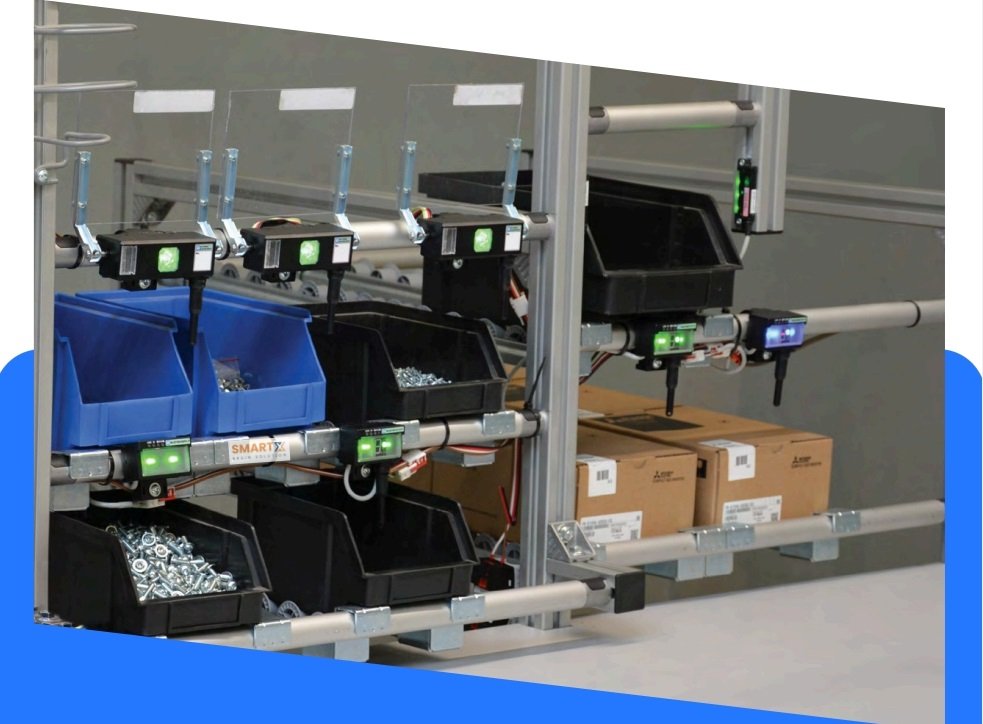Efficient order picking is crucial for warehouses and distribution centers to maintain smooth operations and meet customer expectations. However, common challenges such as misplaced inventory, slow picking speeds, and human errors can result in costly mistakes and delays. Fortunately, pick-to-light technology offers a solution by improving accuracy, reducing picking time, and streamlining workflows. In this blog, we’ll explore the most common order-picking challenges and how pick-to-light systems effectively address them.

Key Considerations for Choosing the RIght Pick-to-Light System
1. High Error Rates in Order Picking
Manual order-picking processes are prone to human error, which can lead to incorrect items being shipped, returns, and customer dissatisfaction. Mistakes in picking often result from misreading pick lists, selecting similar-looking products, or relying on inefficient paper-based systems.
✅ How Pick-to-Light Solves It:
Pick-to-light systems use illuminated indicators to direct workers to the exact location of items, reducing reliance on memory or manual checklists. Workers can confirm selections with a simple button press, significantly improving accuracy.
2. Slow Picking Speeds and Inefficiency
Traditional picking methods, such as paper-based or RF scanner-based systems, can slow down the fulfillment process. Workers spend extra time searching for items, scanning barcodes, or cross-checking order sheets, leading to lower productivity.
✅ How Pick-to-Light Solves It:
By providing real-time visual cues, pick-to-light eliminates unnecessary movements and reduces search time. Workers can quickly locate and pick items, improving overall efficiency and allowing warehouses to handle more orders in less time.
3. Misplaced Inventory and Poor Organization:
Misplaced items disrupt order fulfillment, causing delays and frustration for workers. When inventory is not properly stored or labeled, workers waste time searching for the correct items, increasing the likelihood of errors.
✅ How Pick-to-Light Solves It:
Pick-to-light integrates with warehouse management systems (WMS) to keep inventory organized. The system directs workers to the precise bin locations, ensuring accurate stock placement and retrieval. It also updates inventory records in real-time, reducing the risk of misplaced items.
4. High Labor Costs and Worker Fatigue:
Order picking is a labor-intensive process that requires significant human resources. Manual picking increases the workload for employees, leading to fatigue, decreased productivity, and higher labor costs due to the need for additional workers.
✅ How Pick-to-Light Solves It:
Pick-to-light technology streamlines picking processes, allowing workers to complete orders faster with less physical strain. The increased efficiency reduces the need for excessive manpower, leading to lower labor costs and improved employee well-being.
5. Scalability Issues in Growing Warehouses
As warehouses expand, manual picking systems struggle to keep up with increasing order volumes. Businesses may experience bottlenecks, inefficiencies, and difficulty in training new employees quickly.
✅ How Pick-to-Light Solves It:
Pick-to-light systems are highly scalable, making it easy to add new pick zones or integrate with automated systems. With minimal training required, new workers can quickly adapt to the system, ensuring seamless scalability as business demands grow.
Conclusion
Order picking inefficiencies can hinder warehouse performance, leading to costly errors, delays, and higher operational expenses. Implementing a pick-to-light system addresses these challenges by increasing accuracy, speeding up picking processes, improving inventory organization, and reducing labor costs.
By leveraging pick-to-light technology, warehouses can enhance productivity, meet growing demand, and improve overall customer satisfaction—making it an essential tool for modern fulfillment centers.

